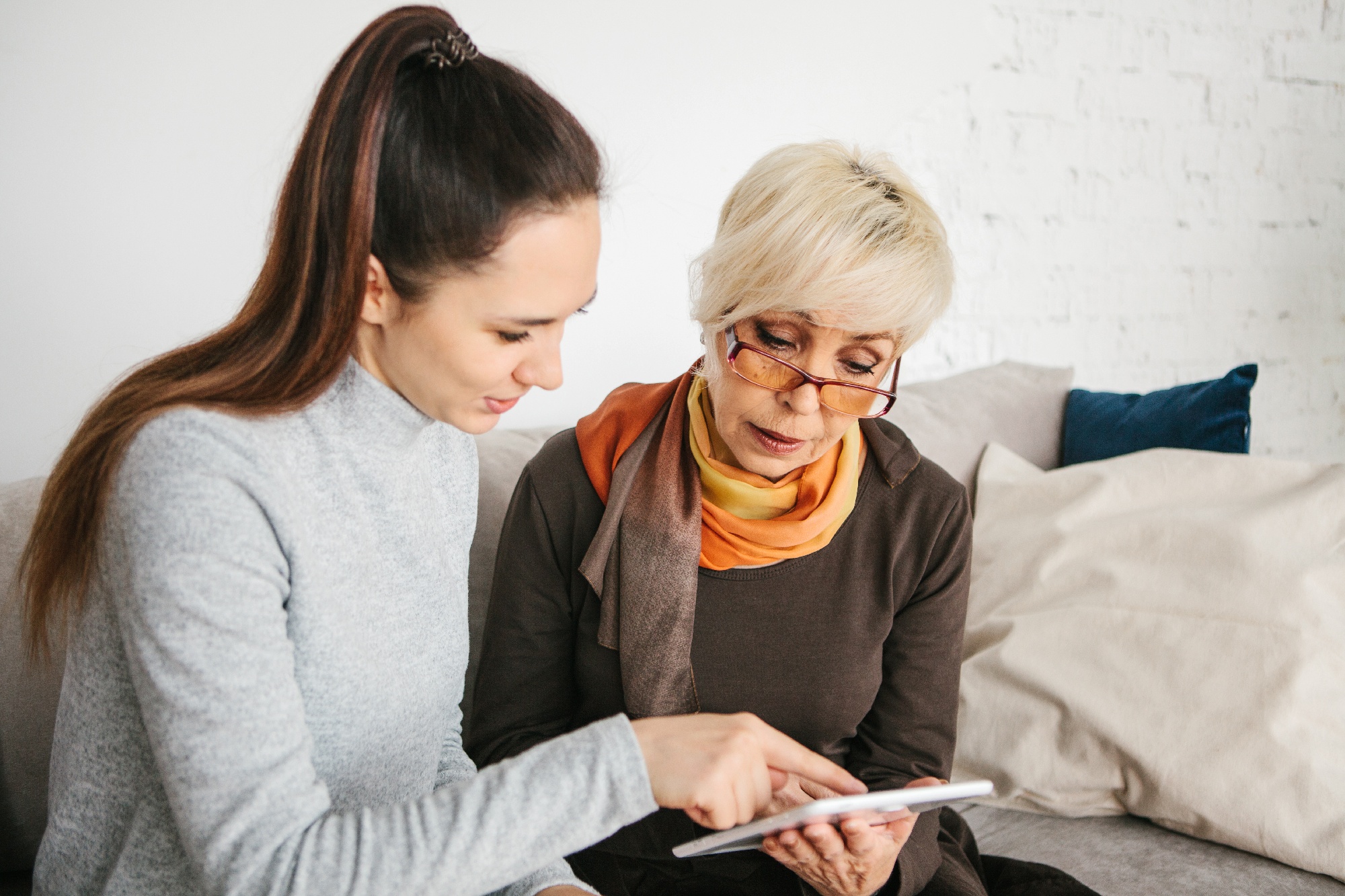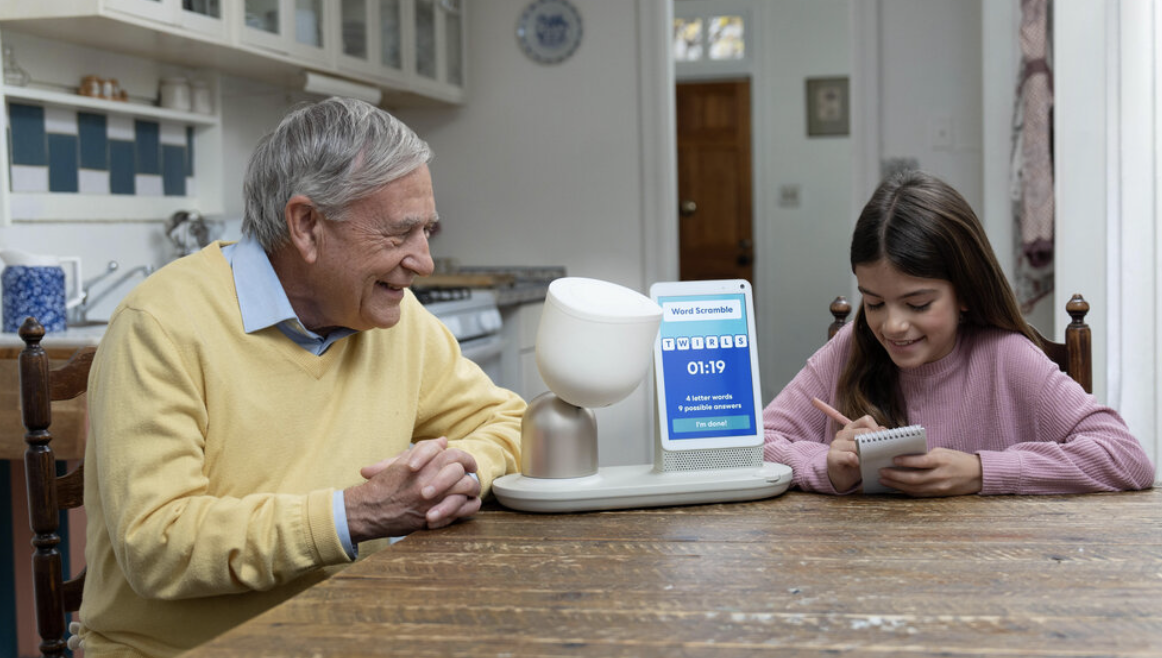Bridging the Digital Divide Between Older Adults and Technology
September 16, 2019 by Intuition Robotics Team
Like it or not, let’s face it - we live in a tech-driven world. In more ways than we often realize, technology plays an integral role in our daily lives, from our morning routines to our nightly means of entertainment.
The next time you need to know a quick piece of information on the fly, getting an answer is a breeze - you’ll simply head to Google and have your answer in a matter of seconds. But for older generations, a task of this nature isn’t necessarily as simple.
Today, some older adults are embracing technology, using it to simplify and enhance their lives. In fact, according to the PEW Research Center, roughly 42% of seniors now own smartphones (over double the amount in 2013). According to the same research, about 73% of older adults claim the statement ‘When I get a new electronic device, I usually need someone else to set it up or show me how to use it’ describes them very well (48%) or somewhat well (25%).
Hence we’re met with a digital divide - the gap between those well-equipped to handle and thrive with technology, and those that fall behind. Let’s take a closer look at the digital divide itself - specifically, we’ll delve into what it is, why it’s problematic, some tactical solutions to address it going forward.
What exactly is the digital divide?
 By now, you’ve probably come across the term ‘digital divide’ from time to time. But what does it truly mean, particularly as it pertains to older adults?
By now, you’ve probably come across the term ‘digital divide’ from time to time. But what does it truly mean, particularly as it pertains to older adults?
To put it simply, it's the divide between those who have the adequate means, understanding and ability to utilize technology, and those that do not.
There are a number of factors that contribute to the digital divide worldwide (such as socio-economic status, nationality, and age), but right now, we’re going to focus on the latter, the digital divide between generations.
Contributing factors
According to research conducted at Washington State University Vancouver, there are three main factors that contribute most significantly to the digital divide among older adults: cost, lack of exposure and physical limitations. Let’s dive a bit deeper into each cause, to get a better understanding of each.
Cost. Older adults either don’t see the same value in paying for costly gadgets and extensive internet access as their younger counterparts - or they can’t afford to shovel out $1,000 for a smartphone or tablet on their more restrictive retirement budget.
Lack of exposure. Since they’ve spent the majority of their lives without today’s modern advances, they have a harder time adapting to them - let alone quickly. Thus, it tends to take more time, exposure and education for them to adopt a new product or form of technology.
Physical limitations. Tiny screens and buttons with low-volume speakers (or no sound) clearly aren’t designed with seniors in mind - especially those with diminishing sight and hearing.
Why is the digital divide so problematic?
 Though it’s still far from perfect, technology is a beautiful thing. Think about it - when technology is utilized correctly, it provides all the tools needed to keep us more connected, entertained, and informed than ever before.
Though it’s still far from perfect, technology is a beautiful thing. Think about it - when technology is utilized correctly, it provides all the tools needed to keep us more connected, entertained, and informed than ever before.
Yet unfortunately, those incapable or unaware of how to use these tools to their advantage are getting left out of the equation - and we predict that this will only worsen over time. And because older adults are in a fragile, often lonely and isolated state, falling behind can pose a serious risk to their declining health - both mentally and physically.
Ultimately, if we as a society continue to leave them out of the equation, they’ll continue them to miss out on a number of tools that can tremendously enhance their lives, from information and entertainment, to staying sharp, sociable and healthy.
Designing technology with older adults in mind
Up until this point, most of the technology we’ve grown accustomed to requires a bit of a learning curve, and prompts for us to learn it - not the other way around. This paradigm can be quite cumbersome for older adults, particularly due to the factors noted above (cost, lack of exposure and physical limitations).
In the future, we shouldn’t be constantly required to learn how to use technology - rather, technology should learn how to use us. The next generation of technology should instead be proactively learning and adapting to best suit our needs, thus improving the quality of life for all, no matter their age, budget or physical capacity.
It’s about time we started factoring older adults into the equation, and designing technology that works for everyone - especially those that stand to benefit from it the most.
ElliQ: Bridging the digital divide
 We specifically designed ElliQ with older adults in mind, to create a product that’s not only easy for older adults to adopt and understand on their own, but one that uses technology to enrich and enhance their lives.
We specifically designed ElliQ with older adults in mind, to create a product that’s not only easy for older adults to adopt and understand on their own, but one that uses technology to enrich and enhance their lives.
From entertainment and productivity, to improved cognition and communication, ElliQ connects older adults to loved ones and the world around them like never before, regardless of what their age or limitations might be.
Though the technology ElliQ encompasses is state-of-the-art, virtually every aspect of ElliQ - her screen, user experience, functionality, speakers, and much more - is user-friendly, uncomplicated, and designed just for them.
We sincerely hope that through ElliQ, and other products designed with older adults in mind, older adults will begin to see technology as a vital tool to help them flourish, rather than something to fear or condemn.
So, where do we go from here?
As society becomes increasingly aware of the gravity of this issue worldwide, there’s definitely hope on the horizon. We’re now seeing a dramatic increase in startups and tech products, such as ElliQ, designed specifically for older adults, aimed at bridging the digital divide and improving their overall quality of life via technology.
Ideally, this will keep older adults incorporated and assimilated with the technology of the years to come, and empower them with all the tools and knowledge needed for a happier, healthier aging process. While there’s no telling what the future holds, we’re excited to see where technology takes us, and we’re delighted to pave the way towards a brighter future of aging with ElliQ.
Recent posts
.png)
The benefits of an AI-driven social robot for area agencies on aging
by Intuition Robotics Team


